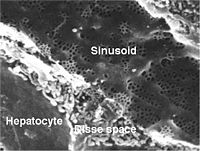
Photo from wikipedia
Seed viability depends upon the maintenance of functional lipids; however, how membrane lipid components dynamically change during the seed aging process remains obscure. Seed storage is accompanied by the oxidation… Click to show full abstract
Seed viability depends upon the maintenance of functional lipids; however, how membrane lipid components dynamically change during the seed aging process remains obscure. Seed storage is accompanied by the oxidation of membrane lipids and loss of seed viability. Understanding membrane lipid changes and their effect on the cell membrane during seed aging can contribute to revealing the mechanism of seed longevity. In this study, the potential relationship between oxidative stress and membrane lipid metabolism was evaluated by using a non-targeted lipidomics approach during artificial aging of Glycine max L. Merr. Zhongdou No. 27 seeds. We determined changes in reactive oxygen species, malondialdehyde content, and membrane permeability and assessed antioxidant system activity. We found that decreased non-enzymatic antioxidant contents and catalase activity might lead to reactive oxygen species accumulation, resulting in higher electrolyte leakage and lipid peroxidation. The significantly decreased phospholipids and increased glycerolipids and lysophospholipids suggested that hydrolysis of phospholipids to form glycerolipids and lysophospholipids could be the primary pathway of membrane metabolism during seed aging. Moreover, the ratio of phosphatidylcholine to phosphatidylethanolamine, double bond index, and acyl chain length of phospholipids were found to jointly regulate membrane function. In addition, the observed changes in lipid metabolism suggest novel potential hallmarks of soybean seed aging, such as diacylglycerol 36:4; phosphatidylcholine 34:2, 36:2, and 36:4; and phosphatidylethanolamine 34:2. This knowledge can be of great significance for elucidating the molecular mechanism underlying seed aging and germplasm conservation.
Journal Title: Frontiers in Plant Science
Year Published: 2022
Link to full text (if available)
Share on Social Media: Sign Up to like & get
recommendations!